Kurdistan Chronicle Issue 23: A Bold Vision of Kurdish Progress, Resilience, and Renewal
With Issue 23, the magazine delivers a potent and diverse compilation of political analysis, cultural celebration, humanitarian reportage, and strategic insight, illuminating the Kurdish experience at a pivotal moment in Middle Eastern history.
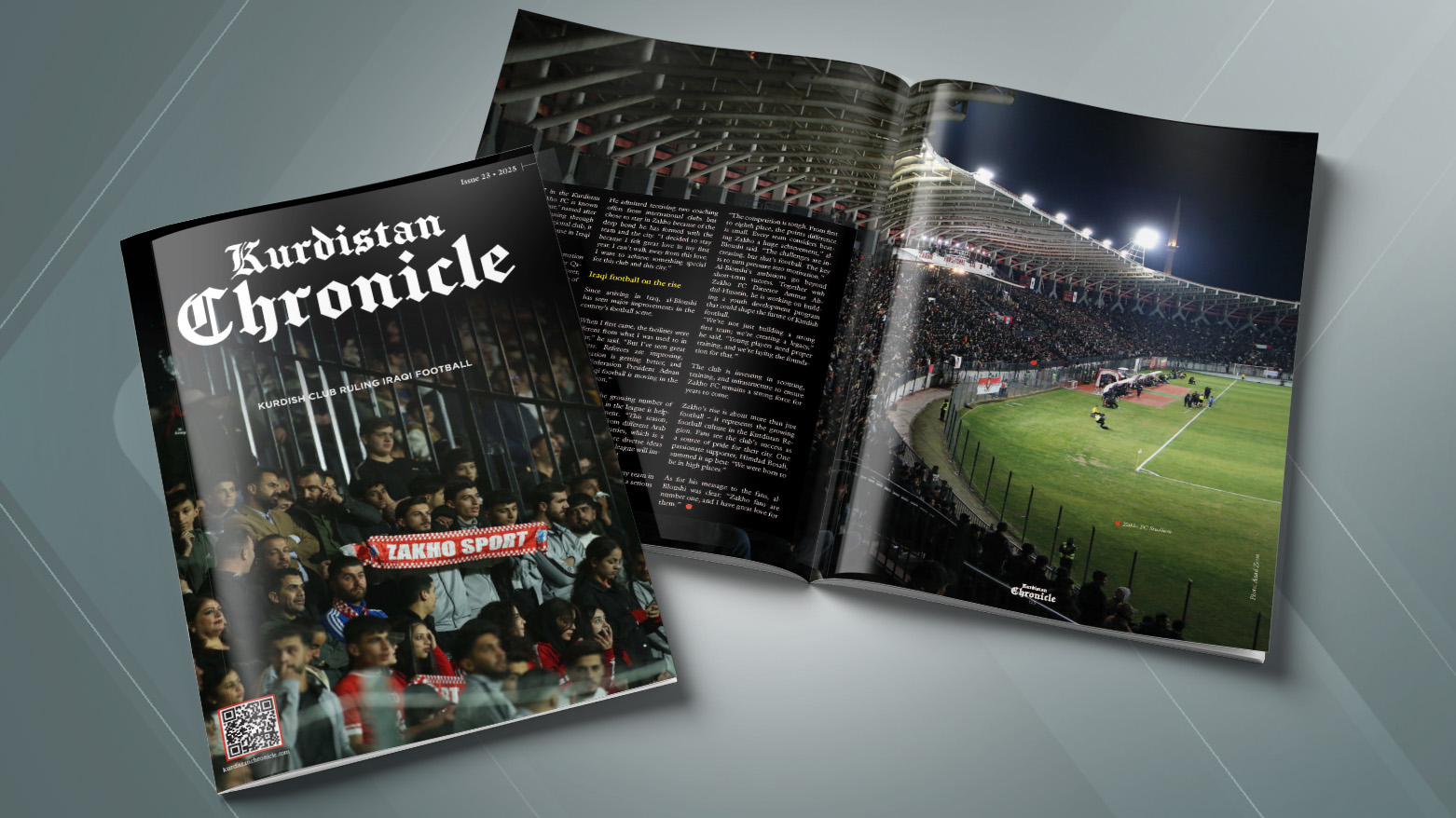
By Kamaran Aziz
ERBIL (Kurdistan24) — The March 2025 issue of Kurdistan Chronicle stands as a monumental reflection of the Kurdish people's historic journey, contemporary challenges, and future aspirations. With Issue 23, the magazine delivers a potent and diverse compilation of political analysis, cultural celebration, humanitarian reportage, and strategic insight, illuminating the Kurdish experience at a pivotal moment in Middle Eastern history.
In a powerful editorial (p. 6-7), Editor-in-Chief Nahro Zagros situates March as a defining month for the Kurdish people, weaving together the memory of historic milestones — from the 1970 Iraqi-Kurdish Autonomy Agreement to the Halabja massacre of 1988 — with transformative regional developments. Of particular significance is the landmark recognition of Kurdish rights by the new Syrian government under Ahmad al-Sharaa and the evolving peace dynamics between Kurds and Turkiye, following Abdullah Ocalan’s unprecedented call for the PKK to disarm.
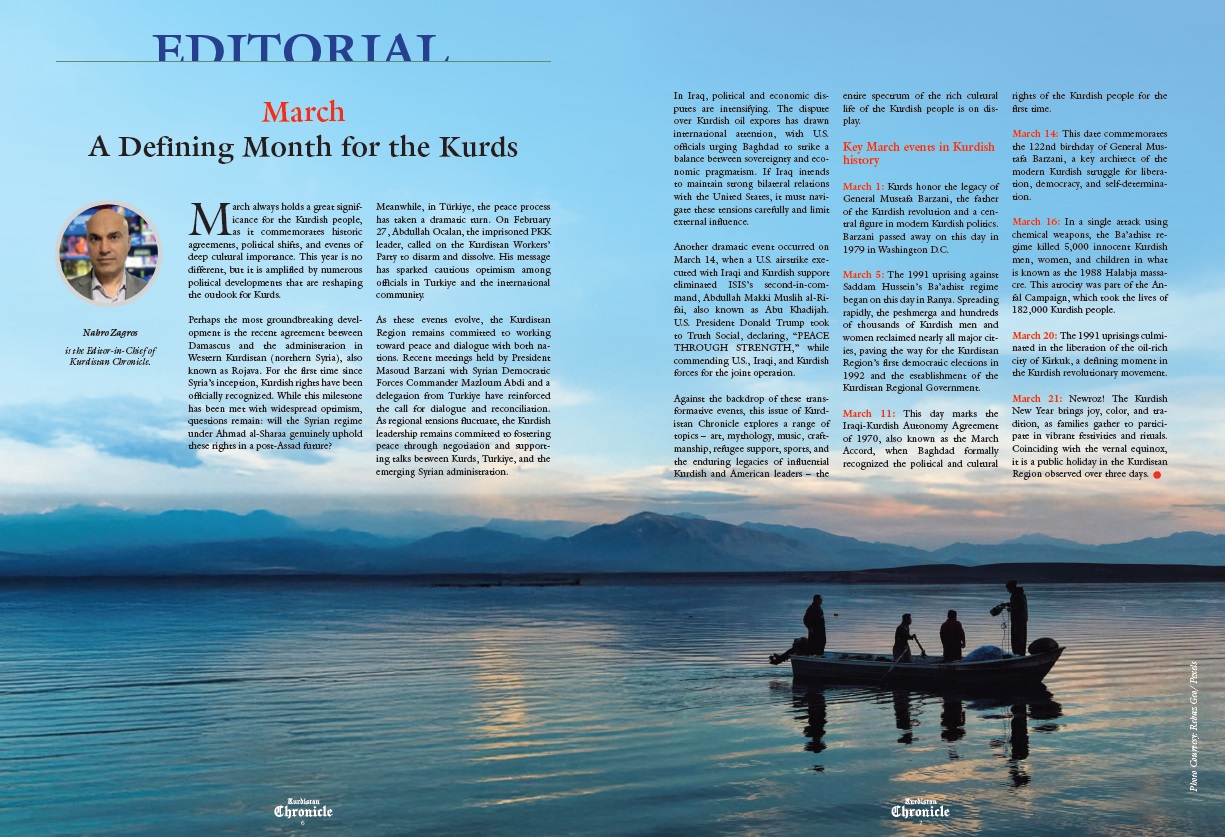
The lead diplomatic report, "Dreaming Big: Kurdistan at the World Governments Summit" (pp. 10-15), highlights Kurdistan Regional Government (KRG) Prime Minister Masrour Barzani’s participation in Dubai's prestigious global forum. Barzani emphasized digitization, private sector expansion, and international engagement as the cornerstones of Kurdistan's development strategy, underlined by the signing of a landmark MoU with the UAE to modernize governance.
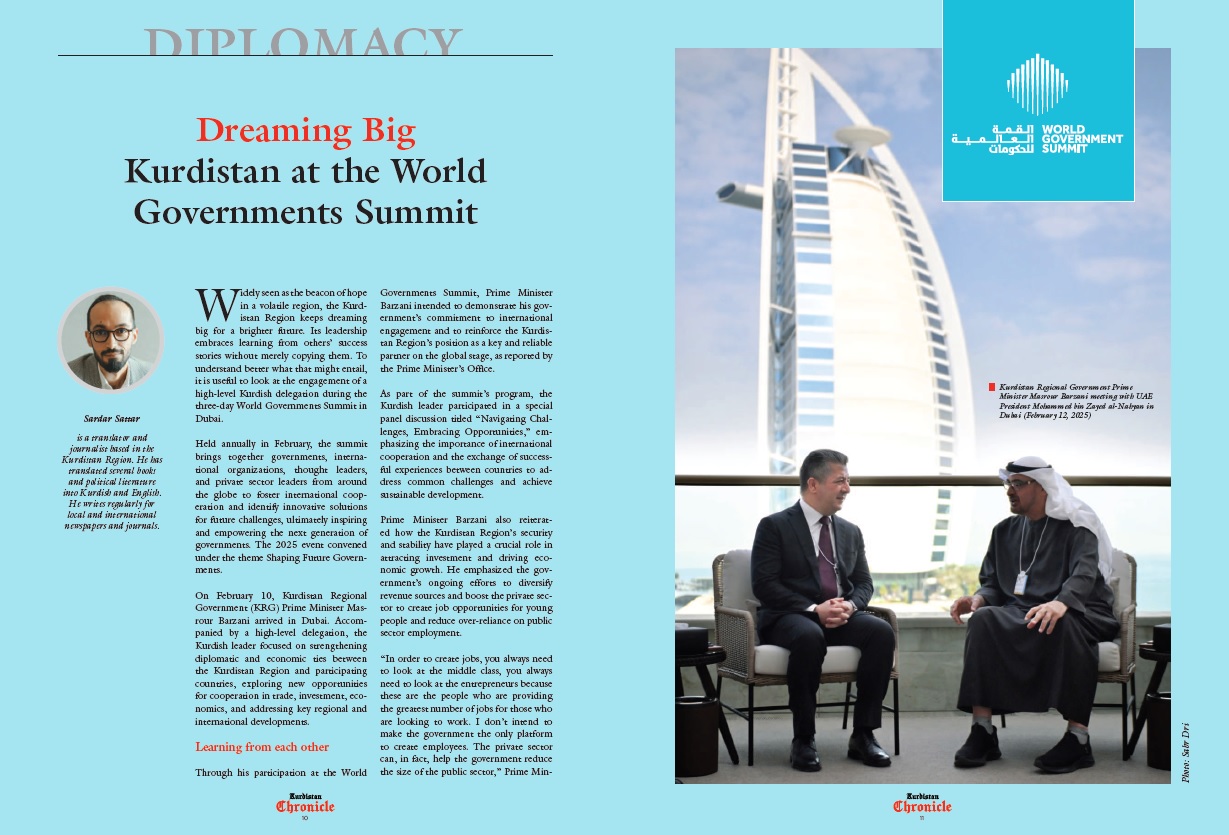
Defense reform and gender inclusion take center stage in "Ministry of Peshmerga Aims to Increase Female Participation" (pp. 16-19), where Dutch Colonel Walter van Bijlevelt reveals the Ministry of Peshmerga Affairs' commitment to raising female representation from a mere 1% to 6%, a move heralded as both necessary and transformational for Kurdish security forces.
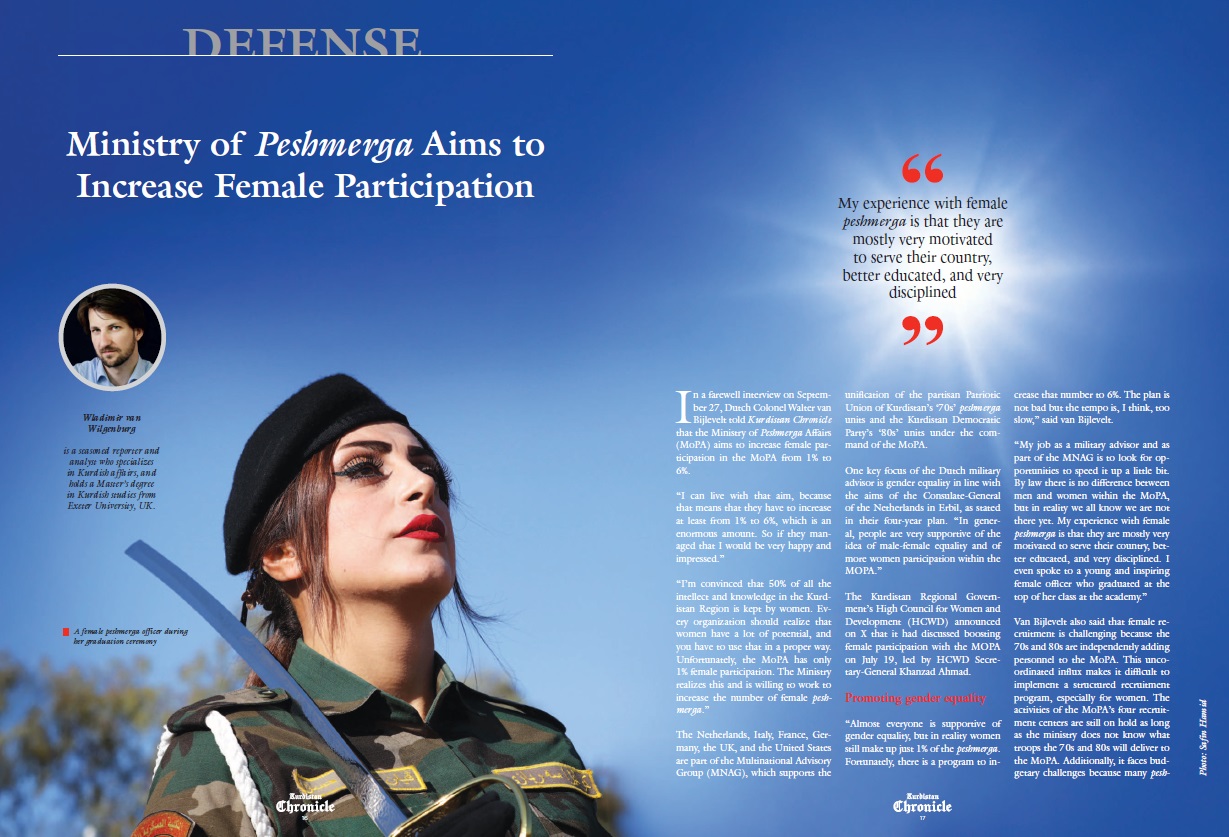
The humanitarian plight of refugees finds a poignant voice in "Kurdistan Still Home to a Quarter of a Million Refugees" (pp. 20-23), documenting the Region's continued role as a sanctuary for over 286,000 refugees, primarily from Syria. Through personal testimonies, Kurdistan Chronicle reveals both the struggles and triumphs of displaced individuals integrating into Kurdish society, underscoring Kurdistan’s enduring spirit of hospitality amid global indifference.
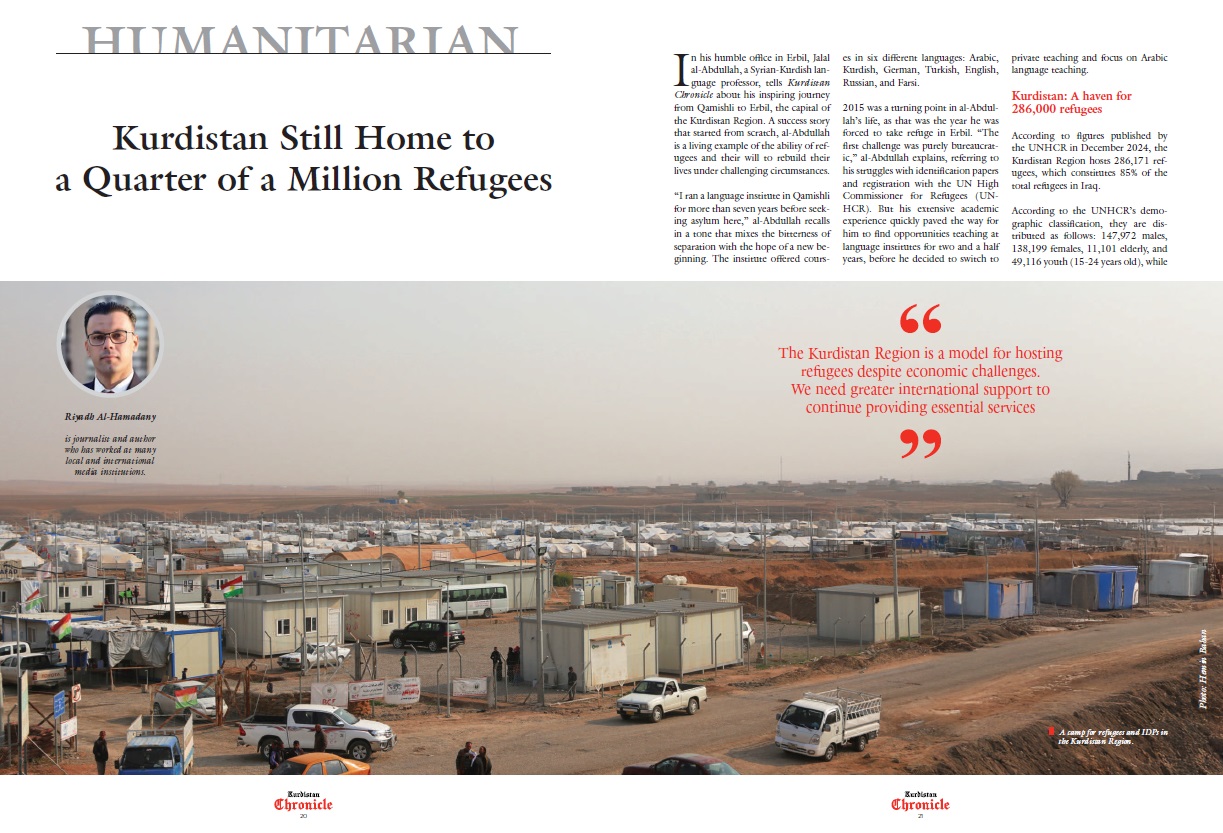
Saman Shali's incisive commentary "Challenges Facing the Kurdistan Regional Government in 2025" (pp. 24-29) offers a sober assessment of the internal political divisions and economic dependencies threatening to undermine the KRG’s future. Shali advocates for unifying the peshmerga forces, strengthening public services, and diversifying the economy to maintain Kurdish autonomy and stability in an increasingly turbulent Iraq.
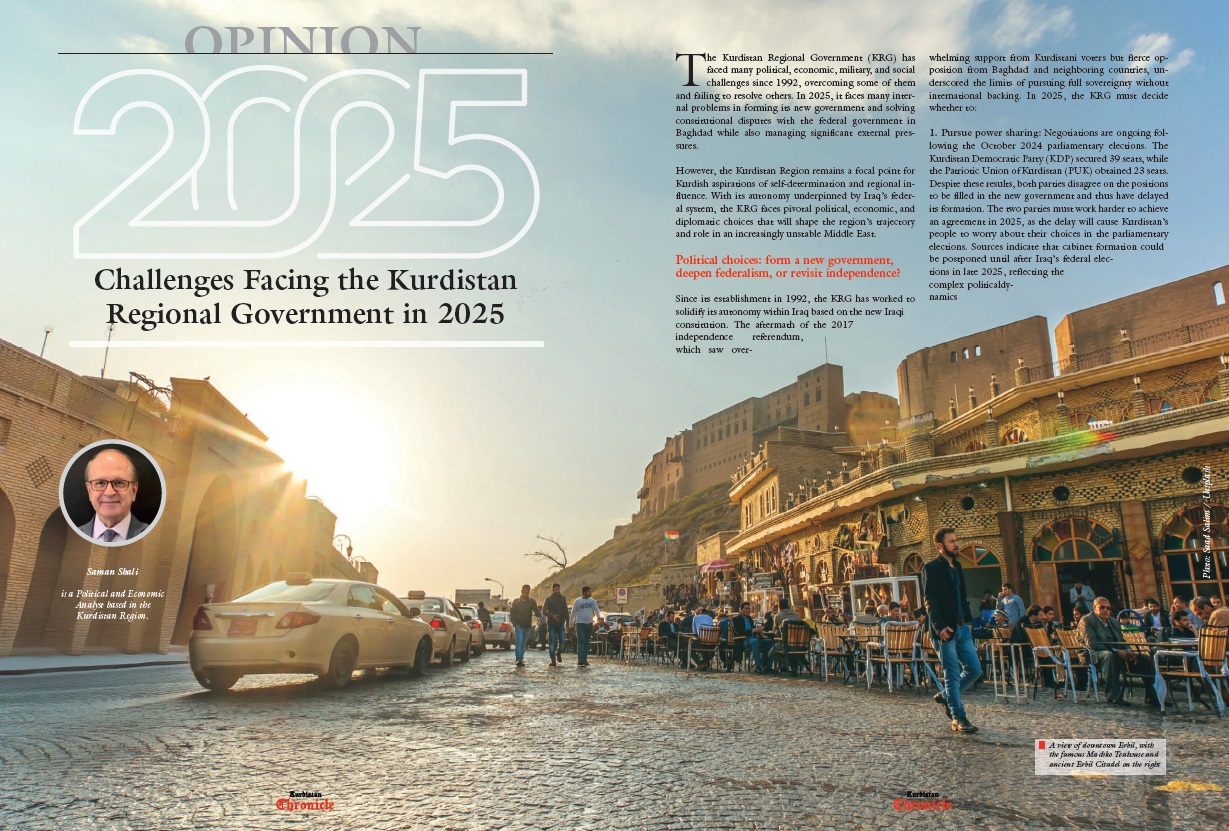
Amid the broader political and humanitarian themes, a profoundly moving section titled "The Photographer Who Witnessed Halabja's Horror" (pp. 30-33) offers a harrowing look back at one of the darkest chapters in Kurdish history. Through the courageous lens of Ezzat Shafiq, the Kurdish photographer who documented the immediate aftermath of the Halabja chemical attack in 1988, readers are confronted with the raw and visceral realities of genocide. Shafiq's deeply personal account — capturing scenes of lifeless bodies strewn across the streets and the unimaginable suffering of the Kurdish civilians — preserves a crucial historical testimony. His photographs serve not merely as memories but as enduring evidence, ensuring that the pain and resilience of Halabja are never forgotten.

Meanwhile, "A Son, a Father, and the Inspiration of General Mustafa Barzani" (pp. 34-39) narrates Richard Eagleton's intimate recollections of his father, U.S. diplomat William Eagleton, and his profound connection to Kurdish leader Mustafa Barzani. The piece offers a rare, personal perspective on Kurdish-American ties rooted in mutual respect and shared ideals of dignity and freedom.
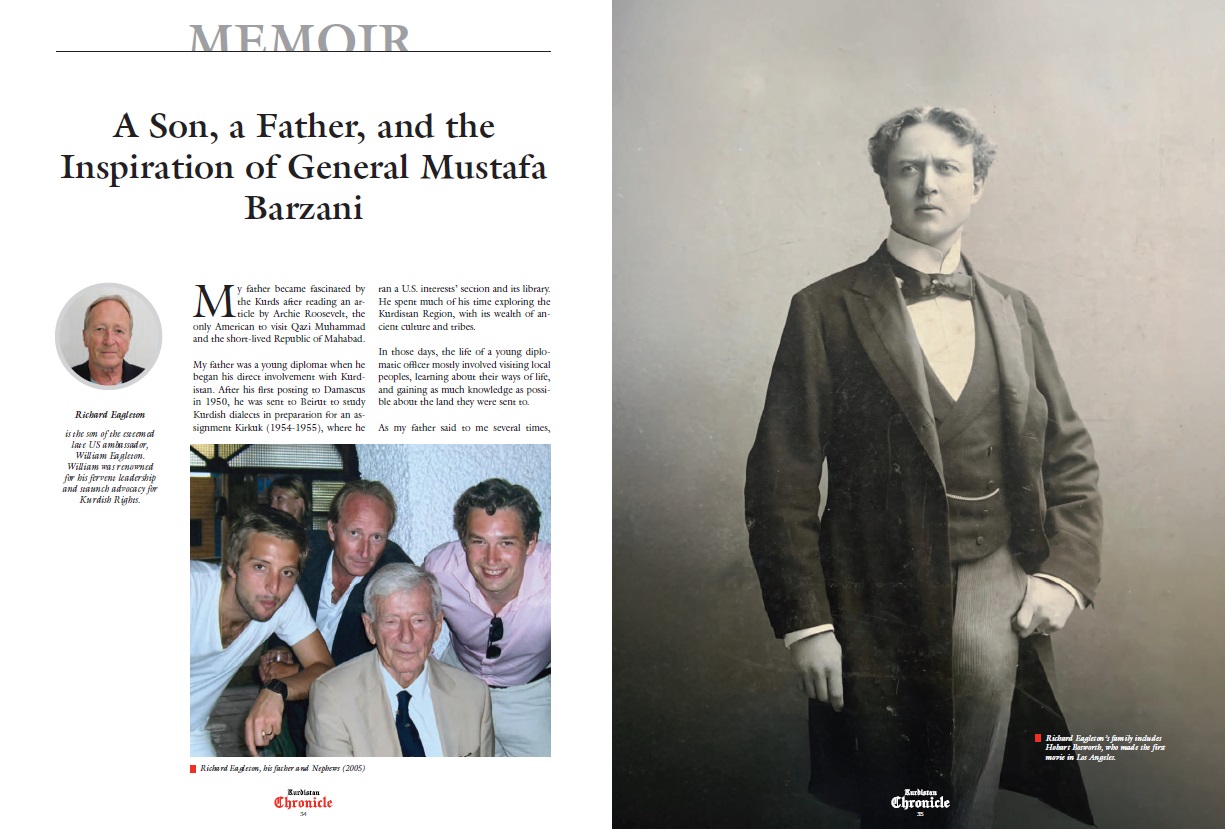
Diplomatic engagement continues with "Strengthening Partnership Between Kurdistan and Armenia" (pp. 40-45), exploring the strategic training programs, cultural diplomacy, and security cooperation that are solidifying ties between the KRG and Armenia — two nations historically bonded by struggles for recognition and survival.
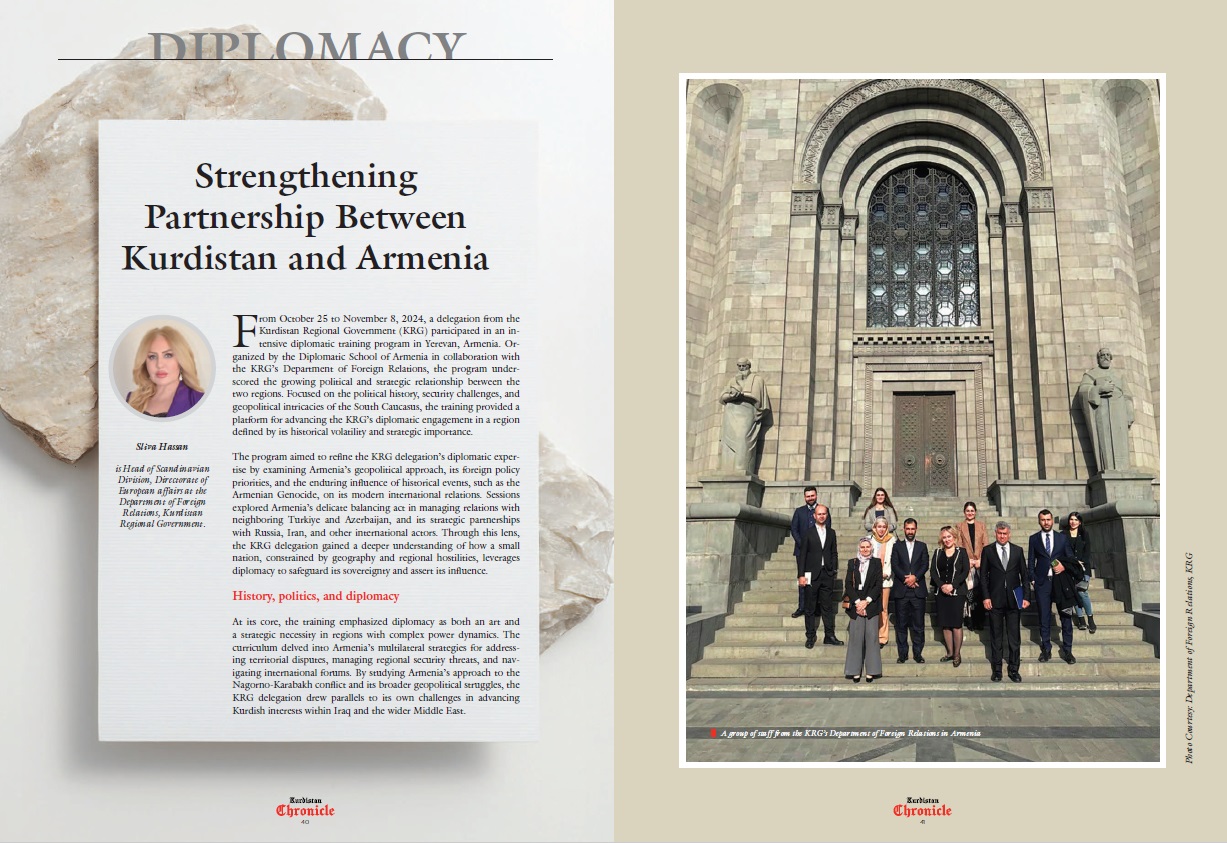
Economically, "Kurdistan’s Pension Reforms" (pp. 46-51) examines how mandatory private sector retirement benefits are poised to fortify financial security, stimulate the labor market, and shift public preference towards private employment, thus advancing the KRG’s broader economic reforms.
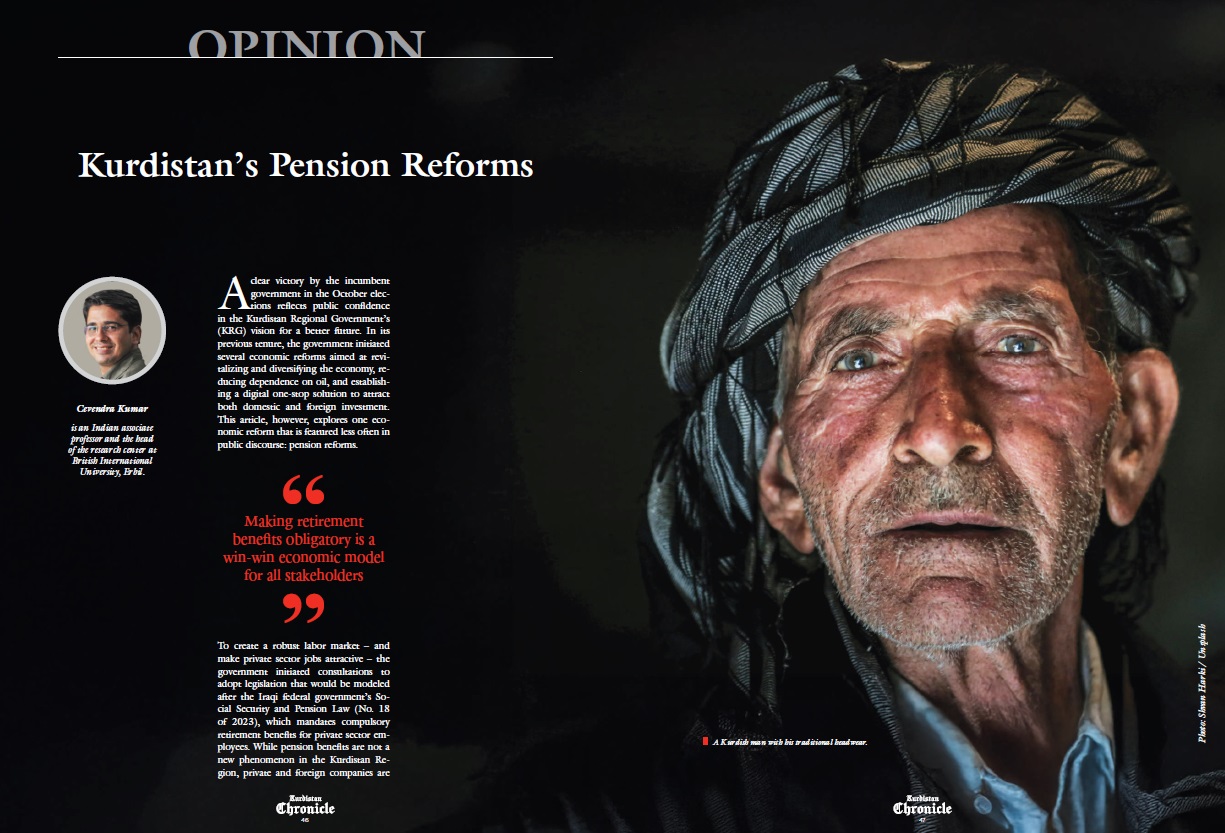
Adding to the cultural and social richness of this issue, "A Christian Village in the Heart of Kurdistan Mountains" (pp. 52-55) offers a rare glimpse into the harmonious coexistence that defines the region. Nestled amid the rugged mountains, this Christian village thrives as a living testament to Kurdistan's long-standing tradition of religious and ethnic pluralism. Through vivid portraits of village life, readers witness a community deeply rooted in faith and tradition, coexisting peacefully within the broader Kurdish tapestry. The article underscores how Kurdistan, often portrayed solely through the lens of conflict, remains a sanctuary where diversity is embraced and protected.
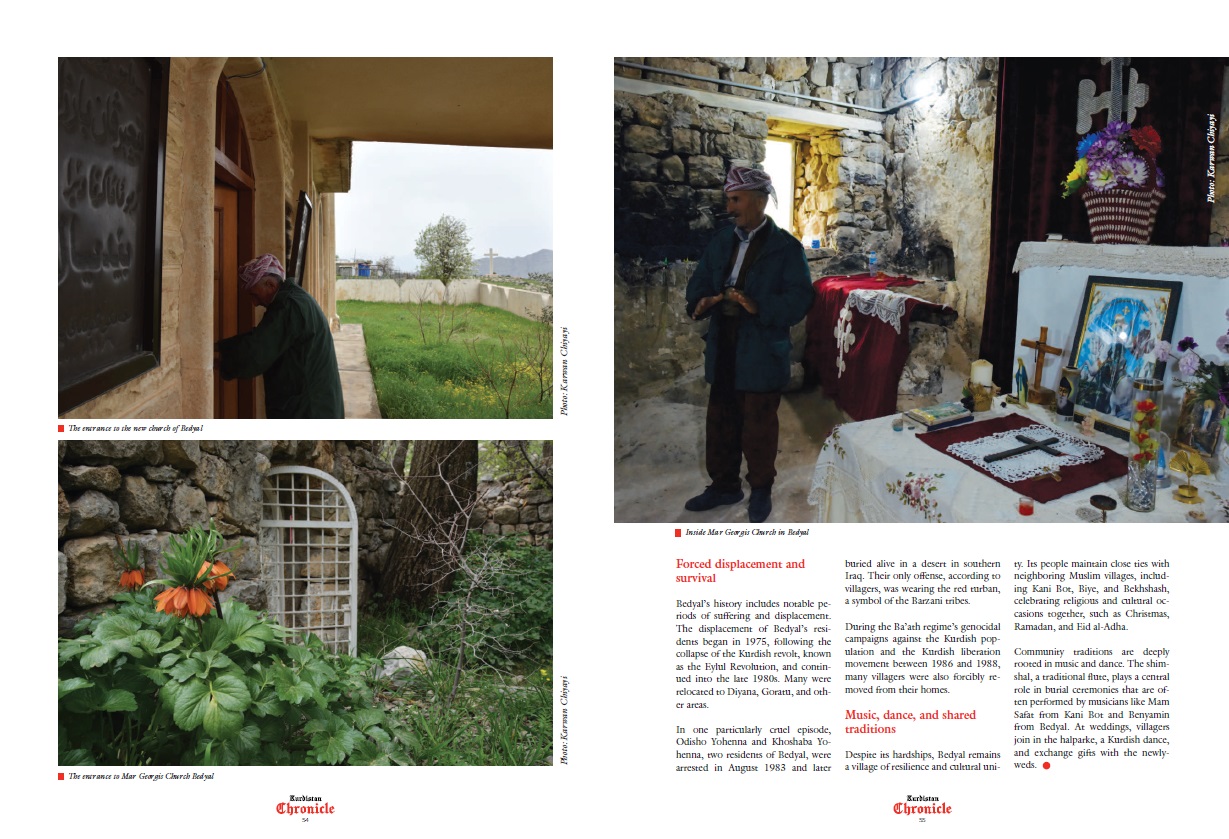
Further enriching the issue are stunning cultural features: "A Journey Through Kurdish Mythology" (pp. 96-99), "Origins of Kurdish Melody in Oriental Music" (pp. 100-103), “A Kurdish Tale of Beauty and Tragedy” (pp. 104-107), and "Klash: A Cultural and Creative Footwear Made to Last" (pp. 108-113), all of which celebrate the depth and dynamism of Kurdish heritage.
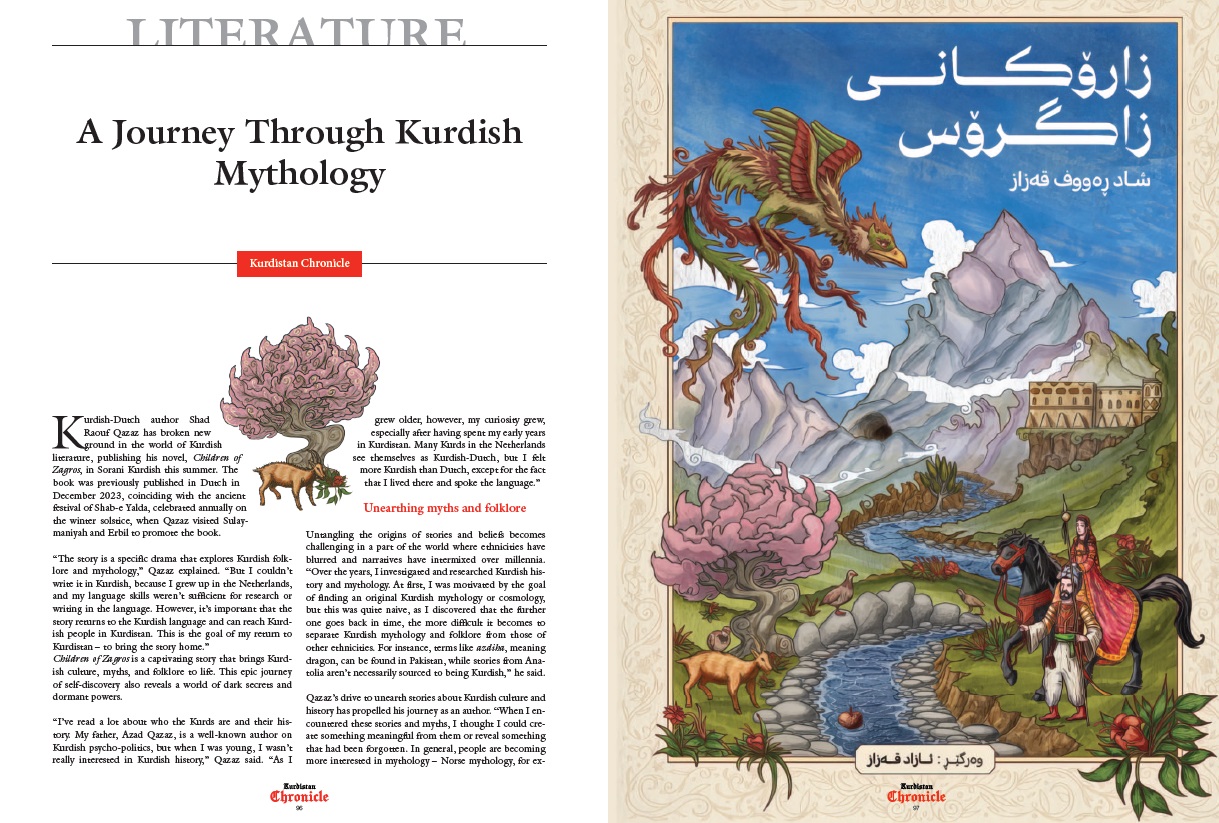
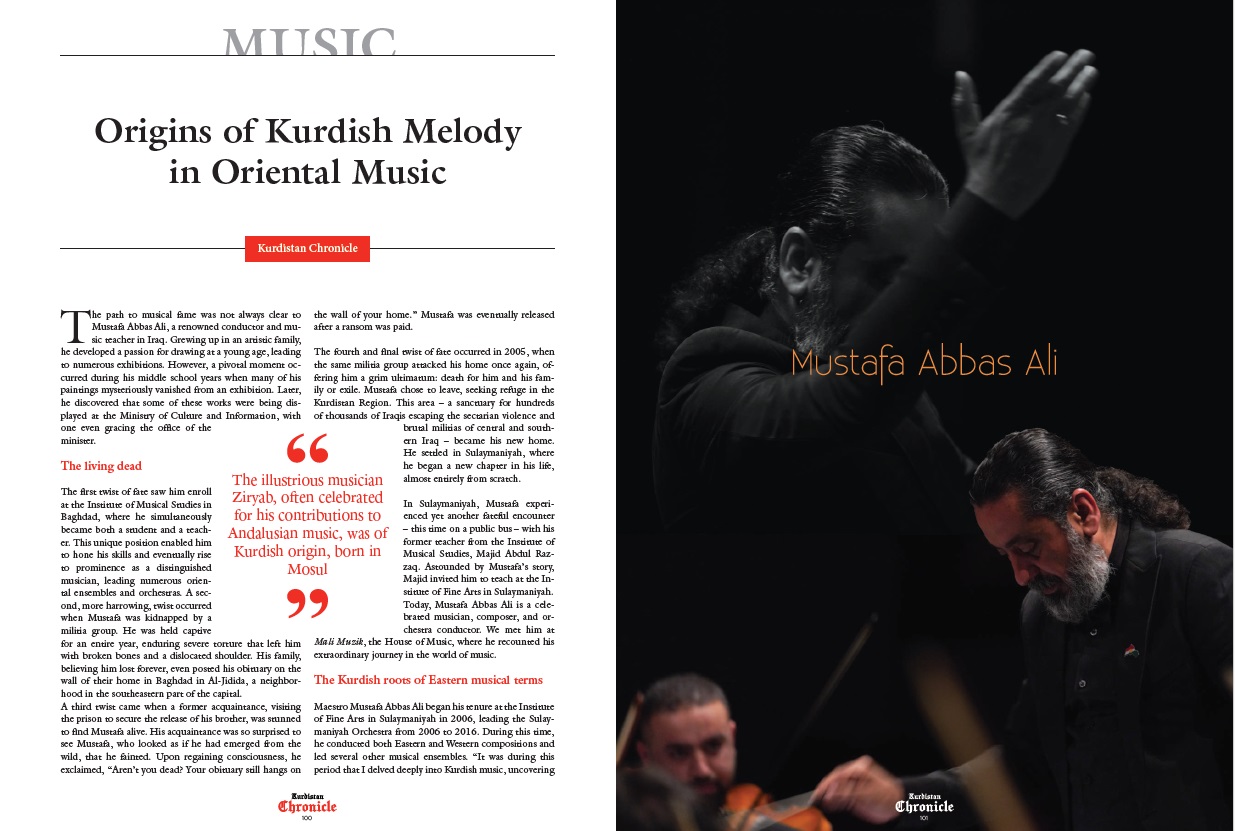
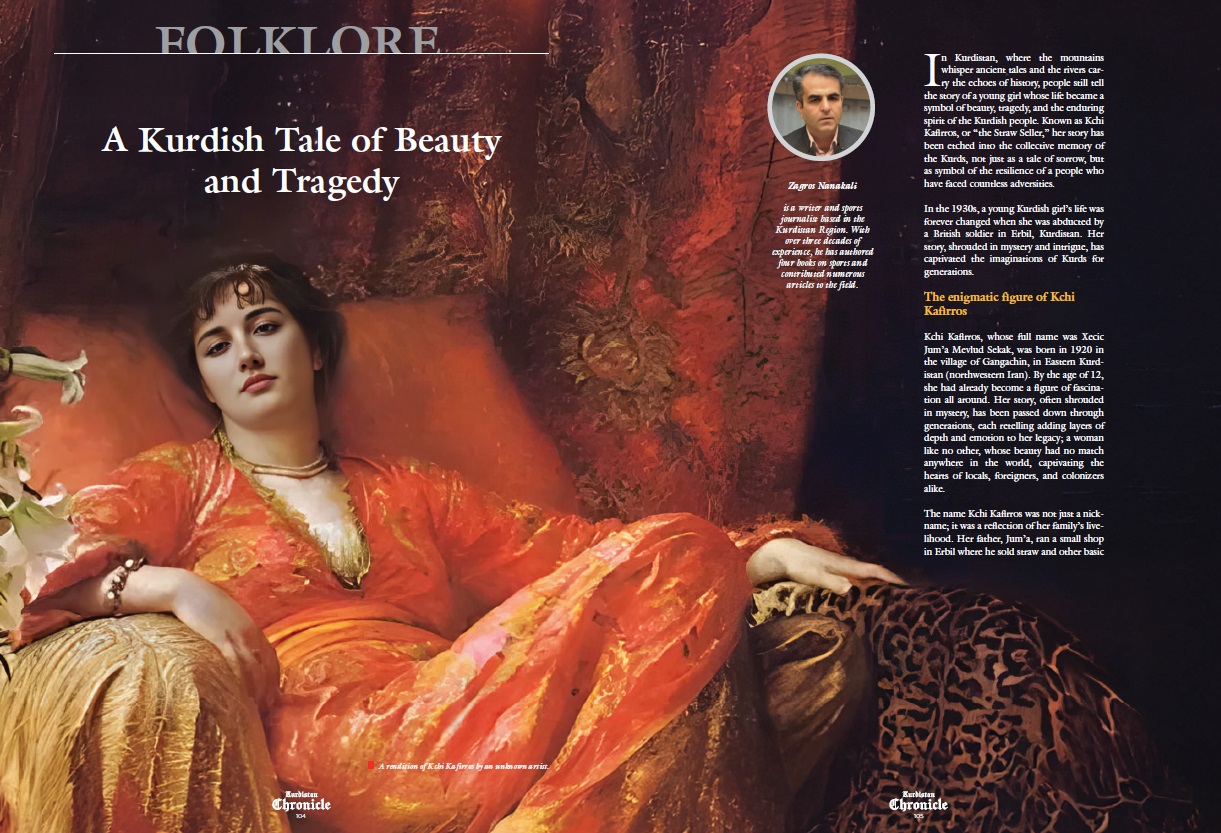
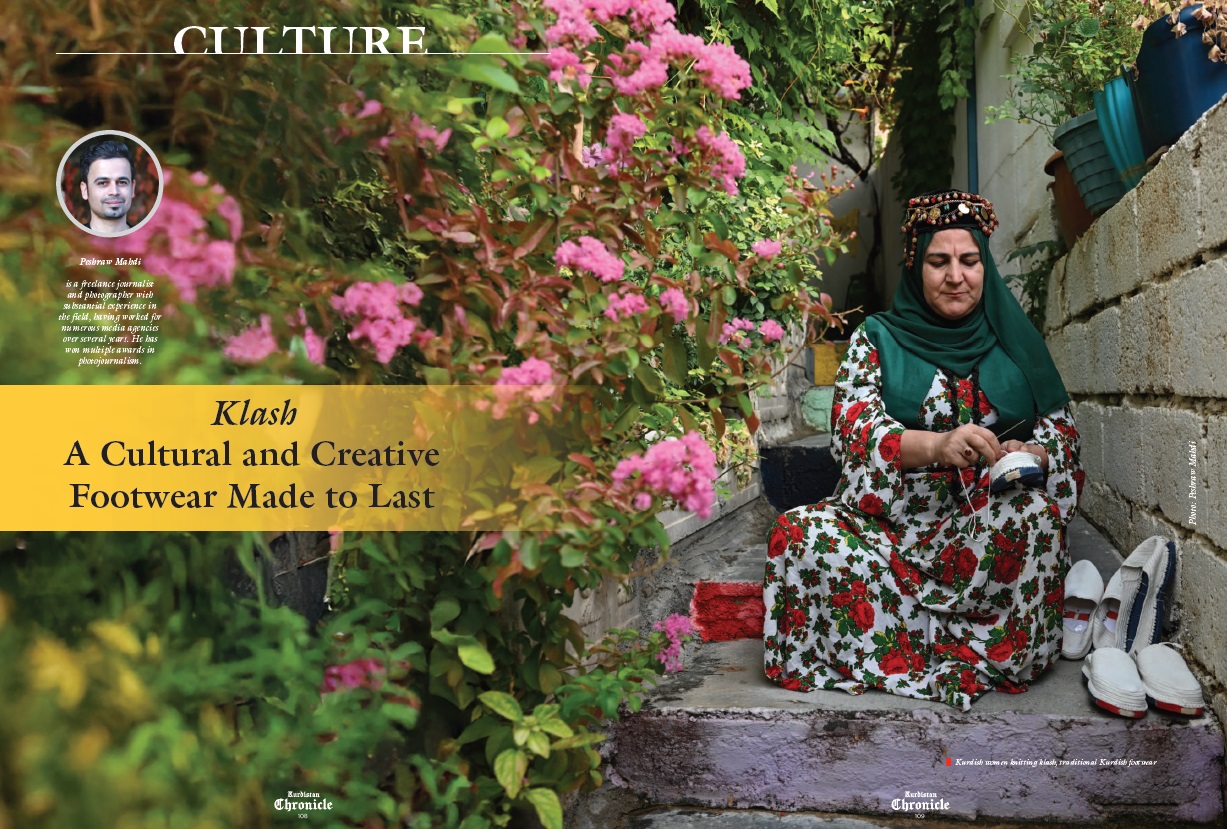
Finally, the sports section "How a Kurdish Club is Redefining Iraqi Football" (pp. 118-123) illustrates how Kurdish athletic achievement is reshaping national perceptions, with clubs asserting dominance in Iraqi football leagues and embodying a new Kurdish confidence on the field.
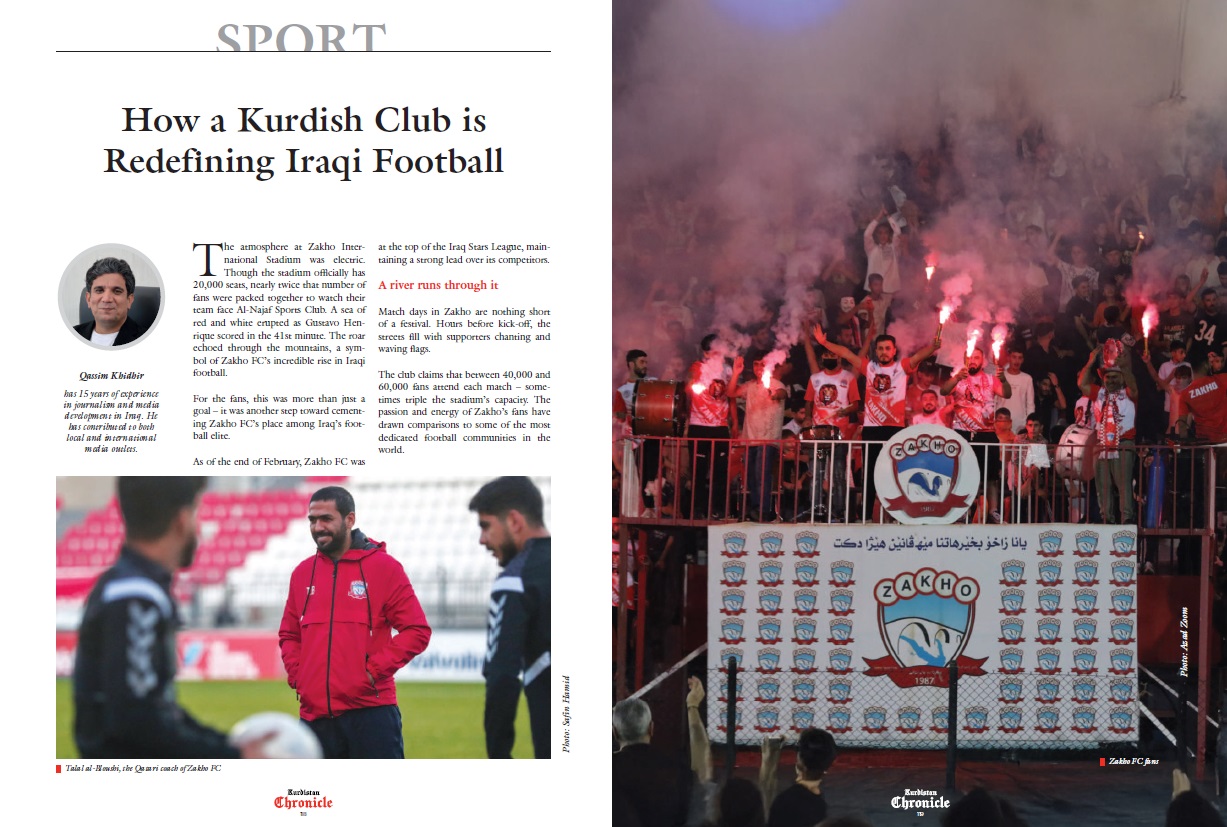
Through its rich content and evocative storytelling, Kurdistan Chronicle Issue 23 affirms the vitality, resilience, and future promise of the Kurdish people at a time of historic opportunity and profound uncertainty.
